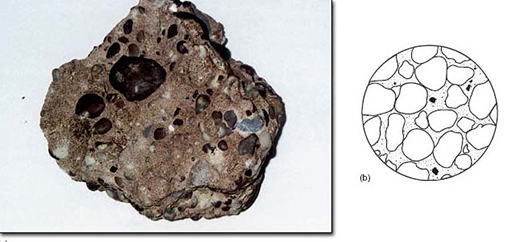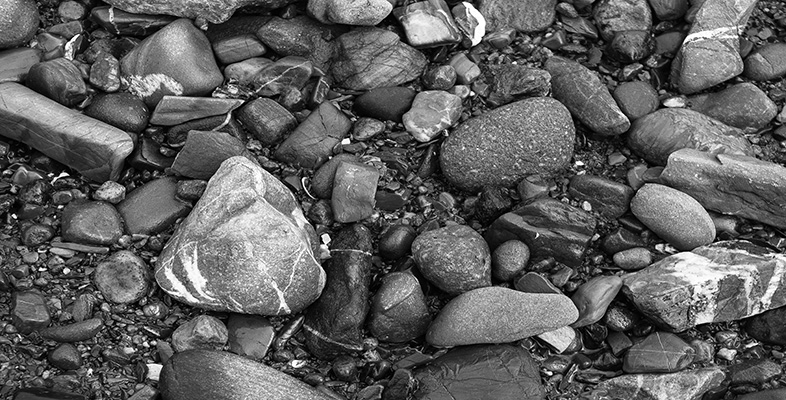1.4 The formation of sedimentary rocks
1.4.1 Sedimentary material
The laying down, or deposition, of layers of rock fragments, mineral grains, or biological material, such as the shells or other hard parts of dead organisms, can produce sedimentary rocks. Once deposited, the loose, unconsolidated sediment may be converted into a solid rock by compaction and cementing of the grains together by chemical action deep below the surface. These rocks consist, therefore, of fragments of sedimentary material, bound together by even smaller fragments, or some sort of cementing material, and so display a fragmental texture, as shown in Figure 7.

